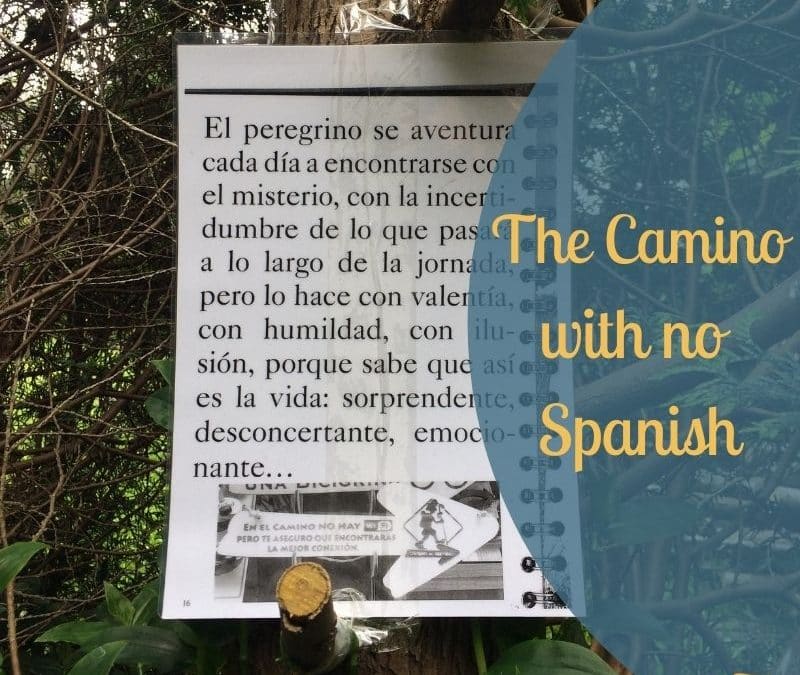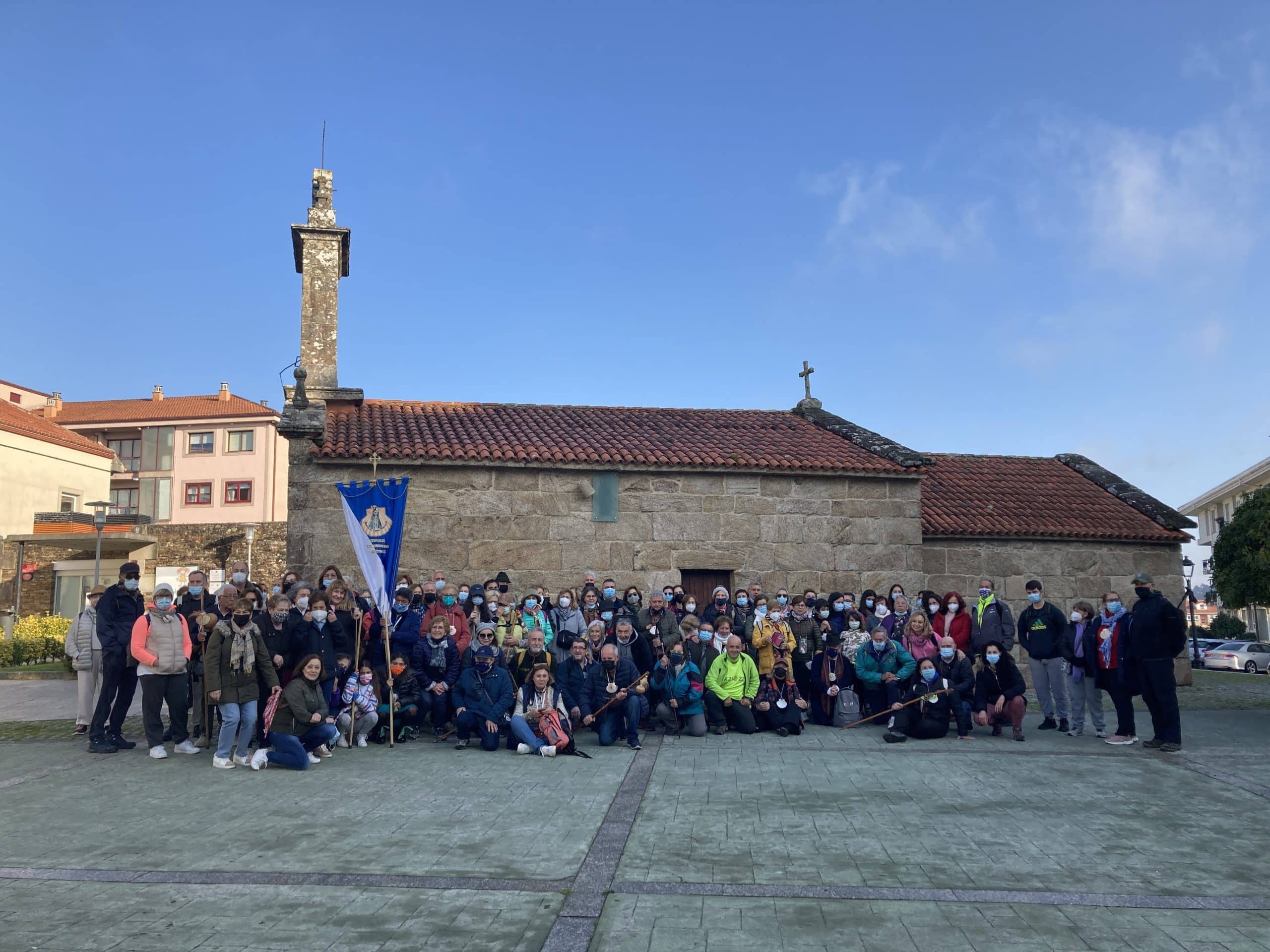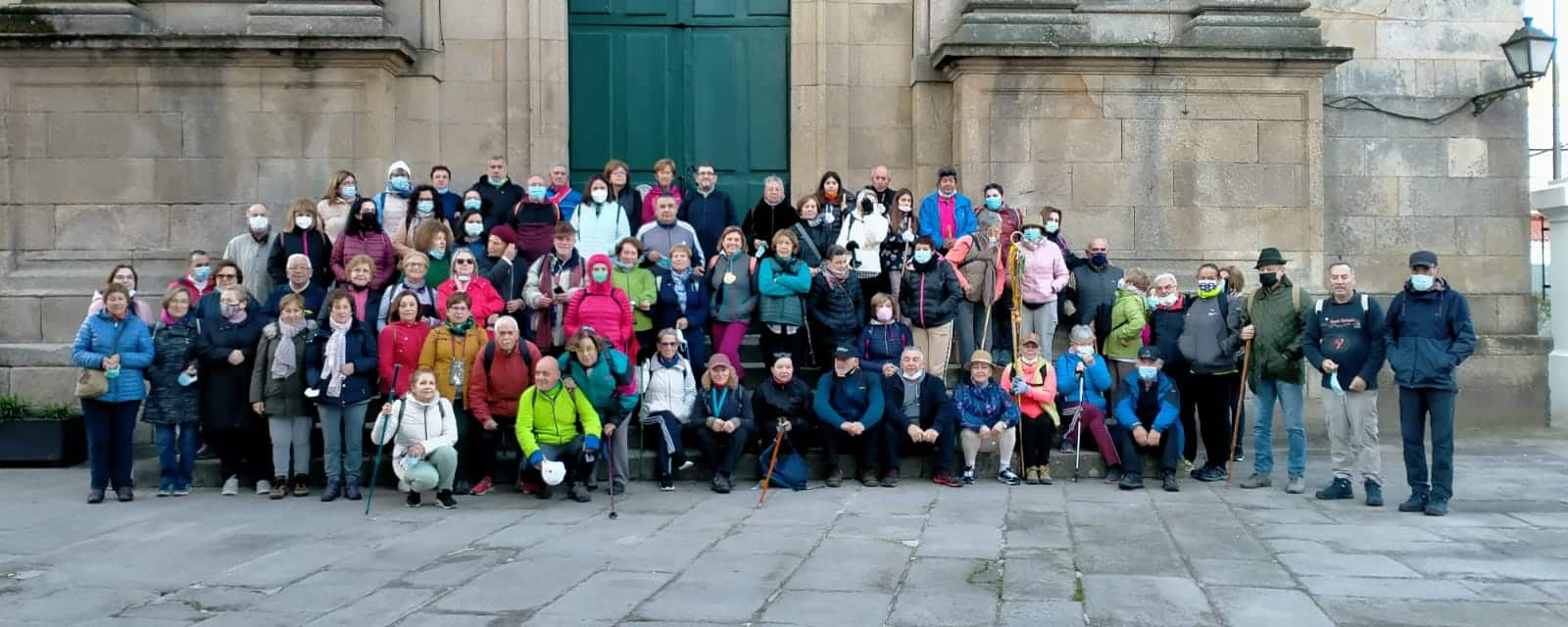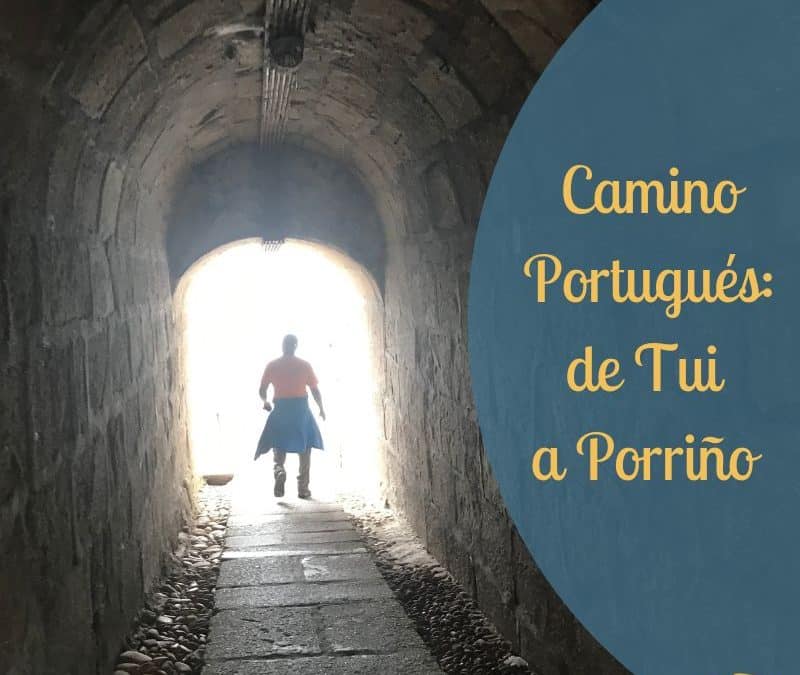
Camino Portugués: Tui-Porriño
Camino Portugués: Tui-Porriño |
Last week I got an early birthday present: a new pair of zapatillas de senderismo (hiking shoes). So, I decided to test them the next day… by walking a stage of the Camino Portugués: Tui-Porriño.
That’s one of the advantages of living on the Camino. If you wake up and feel like walking, you can do it.
I had walked from Porriño to Santiago before, at different times and in different company. I had also been to Tui several times in the past. But I had never walked the Tui-Porriño stage of the Camino. So that’s what I did.
The plan: drive to Tui and leave the car there; walk to Porriño; take a taxi back to Tui (and the car) and drive back home.
The weather has been quite hot and dry this verano (summer). The forecast for the day we walked showed yellow warnings: 50% risk of tormenta (storm) and 60% chance of light rain.
Well, it was sunny and quite hot, like the rest of the summer. Not a drop of rain and no sign of storms either.
Tui
Tui is the first Spanish town after you cross the puente (bridge) over the river Miño, which serves as a natural border between Portugal and Spain.
Tui has been inhabited since prehistoric time so, as you can imagine, it has a lot of history.
In mediaeval times, Tui was an important trade centre, with a very active puerto (port) and a hospital for pilgrims. It was also the capital of one of the 7 provinces of the Kingdom of Galicia.
One of Tui’s most iconic monuments is the Santa Maria cathedral. It has the appearance of a fortress and its construction began in 1120, although it has some later additions, like the main entrance or the organ.
Not far from it is the Museo y Archivo Histórico Diocesano (Diocesan historical archive and museum). The building dates from the 18th century and it used to be a pilgrim’s hospital.
If you keep following the yellow arrows through Tui, you will see the convent of the Poor Clares (or Clarisas, in Spanish). It’s also known locally as convento de las Encerradas (convent of the locked up ones), because this is an enclosed convent. You can buy delicious fish-shaped almond biscuits from the monjas (nuns).
Tui-Porriño
We started at the cathedral, walking through the old part of Tui, and passing by all the places I mentioned above.
We were soon leaving Tui, walking through a mixture of forest areas and roads.
It is not a difficult stage. I was still half asleep when we left the house and I forgot to take bastions (hiking poles), but I didn’t miss them.
What I missed was more places to stop for a break. And I mean bars and cafés. We saw one not long after Tui, too soon for us to stop. And then nothing until we were almost in Porriño, slightly off the Camino. We had plenty of water and some snacks too, so this wasn’t a problem. But it would have been nice to be able to stop sooner.
At Orbenlle, you can follow the official route (through an industrial estate) or the Camino complementary, through the woods. You can’t miss Orbenlle because it has become a Camino landmark, thanks to 3 large paintings: the Pórtico de la Gloria, St. James and an elderly pilgrim.
There are two milestones and a map indicating the 2 routes from Orbenlle. The riverside walk through the woods is the one on the left. Going right will take you through the industrial estate. As you can guess from the pictures below, we took the alternative route.
The last section goes through residential areas, but it’s still nicer than an industrial estate, I think.

We saw many chestnuts during our walk between Tui and Porriño.
Porriño
I read in a guidebook that there’s also an alternative route into Porriño, along the river, but we didn’t see that. So, we took the classic route, which was not particularly pretty. In fact, if there’s something for which Porriño is known locally, it’s for not being particularly pretty.
It is an important logistic centre in Galicia and, as such, it’s quite industrial (remember the big industrial estate right beside the Camino?).
But there are also some interesting buildings. The most important one is, by far, the ayuntamiento (town hall), built between 1919-1921 and designed by local architect Antonio Palacios. His most famous works can be found in Madrid, like the Palacio de comunicaciones (current town hall), and even the logo of Madrid’s metro.
And that was the end of my adventures on the Camino Portugués: Tui-Porriño. Lunch in Porriño, a taxi back to Tui and drive back home… and no problems with the new shoes.
Here are some of the pictures I took:
Today’s Spanish words
For the pronunciation of Tui and Porriño, check El Camino Portugués.
For the pronunciation of puente, check El juego de la oca.
For the pronunciation of tormenta, check Weather on the Camino.
Por the pronunciation of Pórtico de la Gloria, check Santiago de Compostela.
Zapatillas de senderismo
Verano
Puerto
Museo y Archivo Histórico Diocesano
Clarisas
Convento de las Encerradas
Monja
Orbenlle
Ayuntamiento
Go to the next stage of the Camino Portugués: Porriño-Redondela.
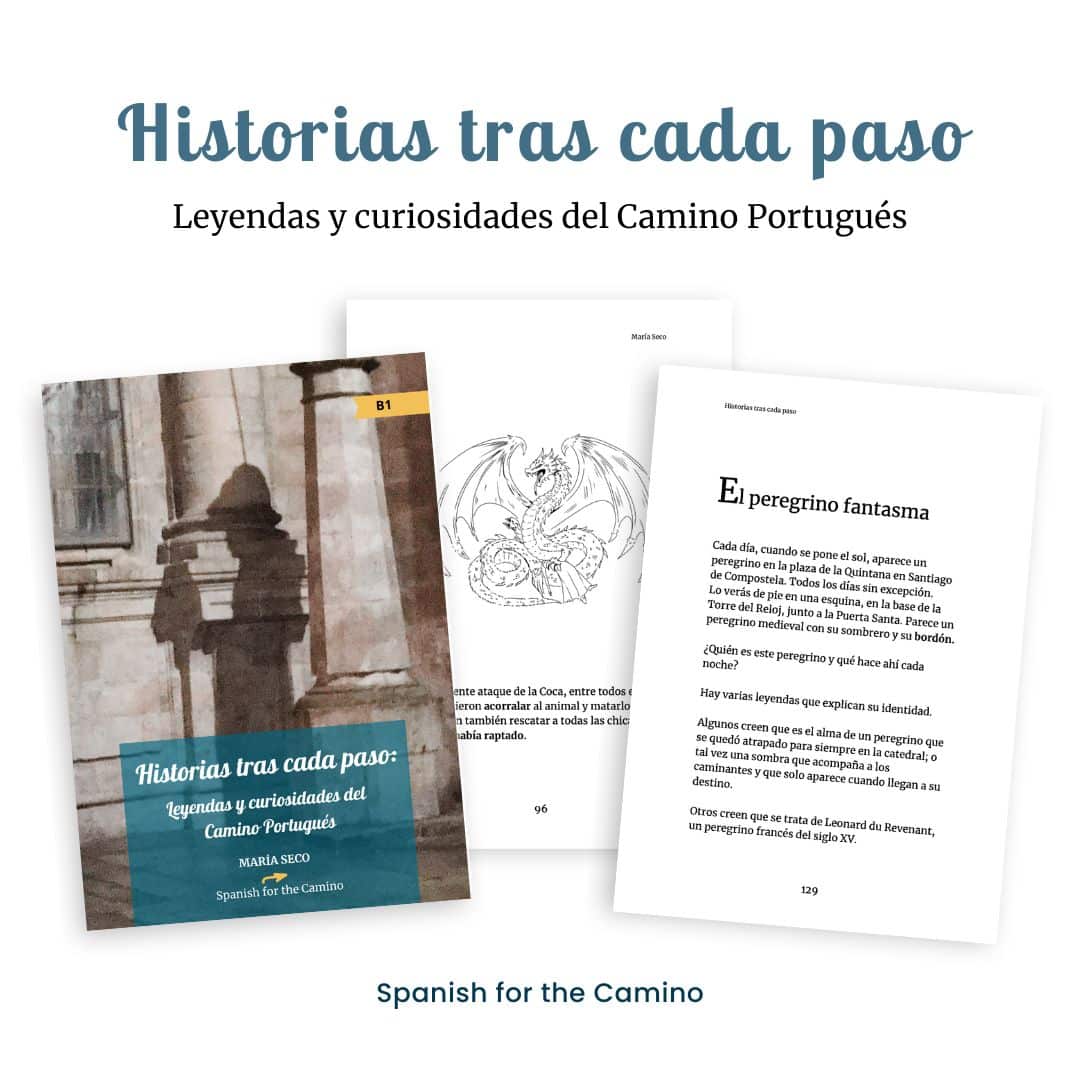
Want more?
Make sure you don’t miss any posts or announcements by subscribing for free here. You’ll receive a free Spanish vocabulary guide with your first Spanish words + cultural tips. And… you’ll get access to exclusive content too.




